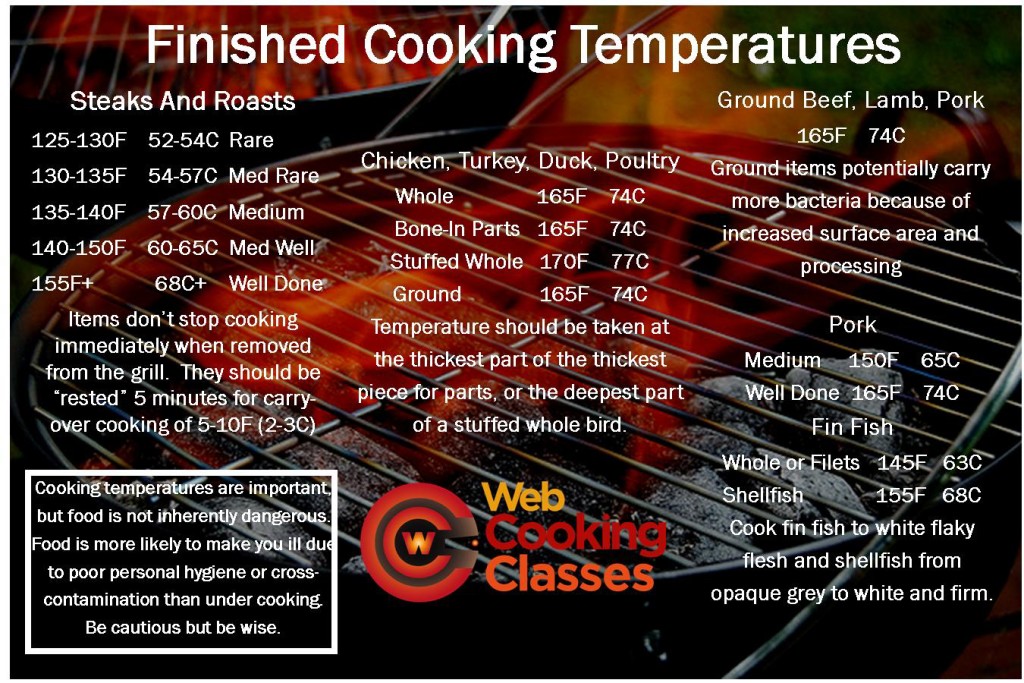“When is my steak done?”
People always ask me, “When is my steak done?” “When is my chicken done?” and “How do I tell when my food is done cooking?”
I’m confident that everyone recognizes when they START cooking, but most home cooks aren’t sure when to STOP cooking. This is the most important skill to avoiding dried out food.
My culinary college students ask me this question all the time and the answer is always the same. “How long should I cook my steak,” they’ll ask. “Until it’s DONE,” is my standard response.
A better question would be, “how do I TELL steak doneness?”
Skilled cooks are using a fool proof OBSERVABLE way to SEE when to stop cooking and it doesn’t include guessing, poking or gashing the beef.
You don’t believe the myths and old wives tales about how to tell when you should STOP cooking, do you?
- Poking the food with your finger and comparing against your palm or cheek is ridiculous.
- Gashing an item open to look inside only releases all the moisture, creating dry lacerated food.
- Cooking by TIME or how LONG to cook something doesn’t take all the variables in cooking into consideration.
The ONLY way you can precisely, accurately and QUANTIFIABLY tell chicken doneness and correctly get steak done perfectly is with a thermometer. There’s no guessing, no poking, no gashing when you have an exact temperature that can be the STOP sign so you don’t over cook.

You can start to quantify your cooking with measurable temperatures and you’ll add consistency to your cooking as well. Your items will all be cooked to the perfect doneness without becoming tough or dried out.
That’s why you should figure out your “personal steak number”.
You should arrive at the EXACT temperature that’s perfect for YOU, and your results will be spot-on every time.
Trade in your clock for a thermometer as the authority of steak doneness, and everyone can have their own perfectly cooked piece of beef. You’ll be able to cook some steaks more rare, some medium and others well-done based on your steak number as a benchmark.
This is one of the largest differences between the way home cooks are taught and culinary college students are taught to cook. Tomorrow’s professionals are instructed in the METHODS behind cooking. They’re empowered with the OBSERVABLE and QUANTIFIABLE step-by-step procedures that can be used on any combination of ingredients they desire.
I’d like to share even more culinary school tips and techniques with you in my FREE webinar, “The 5 Skills Taught In Culinary College That Are Essential In All Of Cooking”. You can register for the next online gathering by clicking HERE.
Because, when you start to THINK like a chef, you start to COOK like a professional!



Trackbacks/Pingbacks